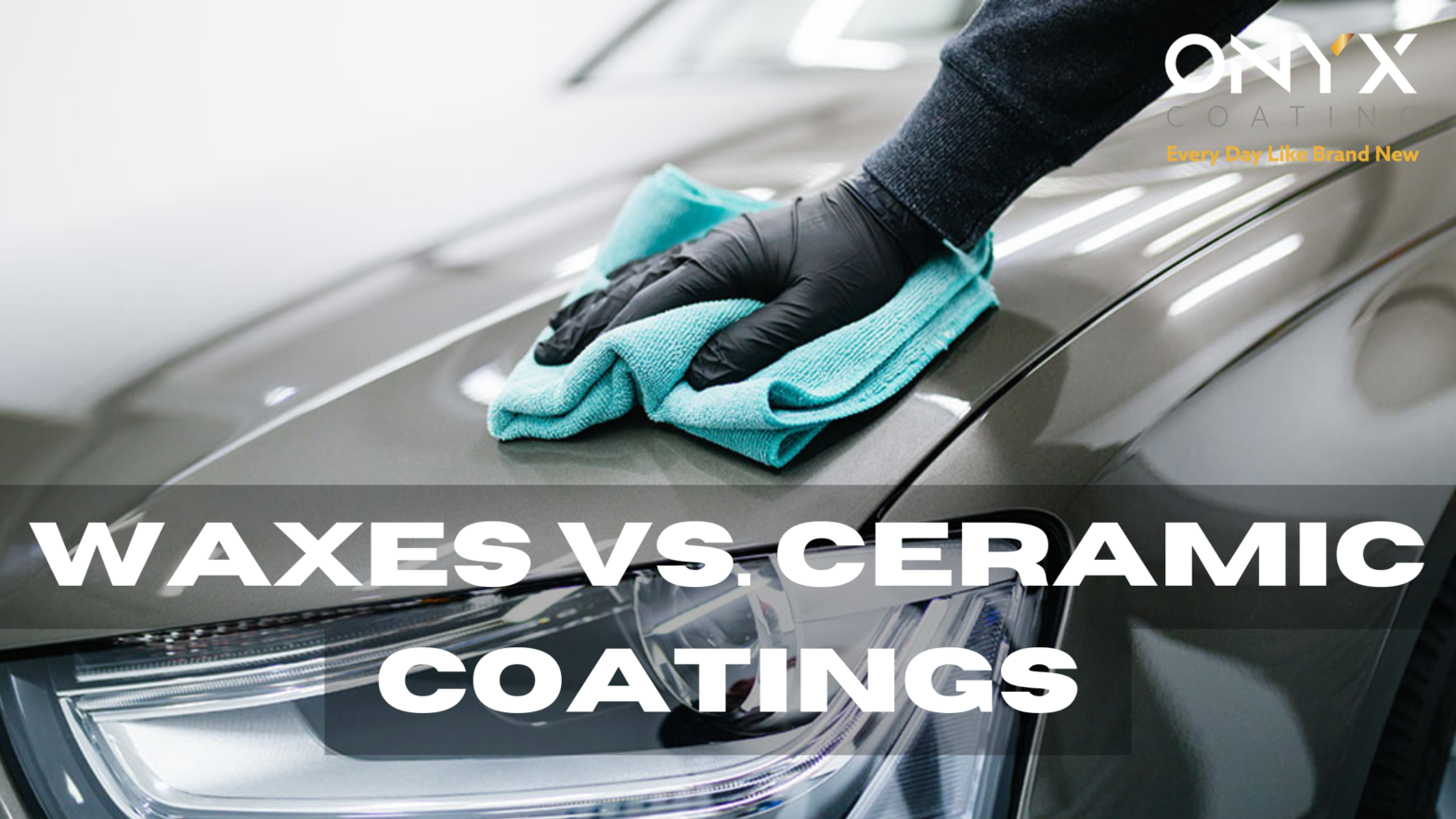Waxes vs. Ceramic Coatings: The Pros, Cons and Which is Best for You

There are countless options for detailing products on the market today. Two common products are automotive waxes and ceramic coatings. In this blog, we’ll go over the differences between these two products, the pros and cons of each and help you find the best ceramic coating or wax for your needs.
Waxes
What is automotive wax?
When talking about automotive waxes, there are several different materials we can refer to as waxes. Waxes are often referred to as “malleable solids,” or a substance that can change from solid to liquid relatively quickly. Most automotive waxes are made of carnauba and paraffin, but there are synthetic options as well. Automotive waxes are rarely made 100% of wax, as this would be too hard to spread evenly on the car’s surface. Solvents and lubricant oils are usually added to allow spreadability from a solid wax.
Waxes pros and cons
Waxes have been an incredibly popular car care choice for decades and for good reason. They are an easy to apply, natural substance, often created with carnauba wax. They come in a variety of formulas, including pastes, liquids and sprays, and add a warm glow and shine to a vehicle’s paint. Today it is still a popular choice for rare and collectible cars and showroom vehicles, or any place a driver wants a glossy, wet look.
However great it is for adding to your car’s appearance, wax has some drawbacks as well. As stated above, waxes are natural products and are merely water-repellent, not waterproof. A thin layer of wax will last, at best, a few months when exposed to weather, car wash schedules, and daily wear and tear.
Waxes are a great option for appearance-focused customers. But if you regularly expose your car to the elements or prioritize protection, a ceramic coating may be the best option for you.
Ceramic coatings
What is a ceramic coating?
Ceramic coatings are a fairly recent development in the world of detailing technology. These kinds of coatings act much different from waxes of the past. After applying the coating to a car’s paint, the material generates a curing property and bonds directly with the surface. This bond isn’t easily removed and liquids repelled, along with any surface contaminants that come with them.
Ceramic coatings Pros and Cons
There are several major differences between waxes and coatings. For one wax simply sits on top of a surface. Ceramic coatings create a solid bond with the surface they’re applied to. These coatings also are much more durable than waxes and are able to resist UV rays, environmental contaminants, and chemicals. Ceramic coatings like the Onyx Nano Shield Coating also may contain water-repelling qualities, provide protection against bird droppings, and aid in keeping your car looking cleaner longer. The protection guarantee on most ceramic coatings is much, much longer than that of ordinary waxes. Waxes tend to last a few weeks, but ceramic coatings usually protect your car for several months, with some lasting years.
However, this long-lasting protection requires a bit of a commitment. Almost all ceramic coatings require professional application. This professional detailing will require an additional cost and downtime for your car, adding to expenses that don’t factor into an at-home wax job.
Ceramic coatings are a great option for vehicles that experience more use than showroom cars or collectibles. They add shine and the protection from UV rays and the elements is unmatched.



















